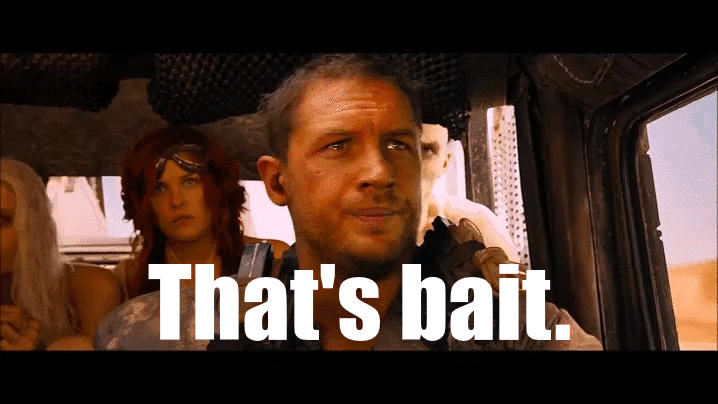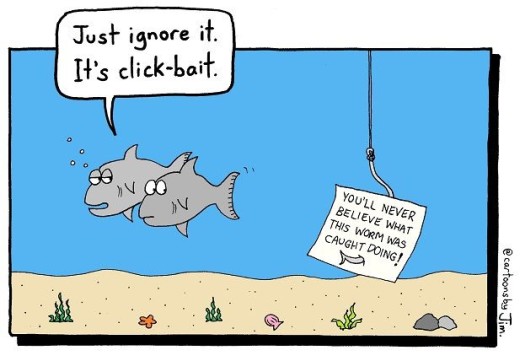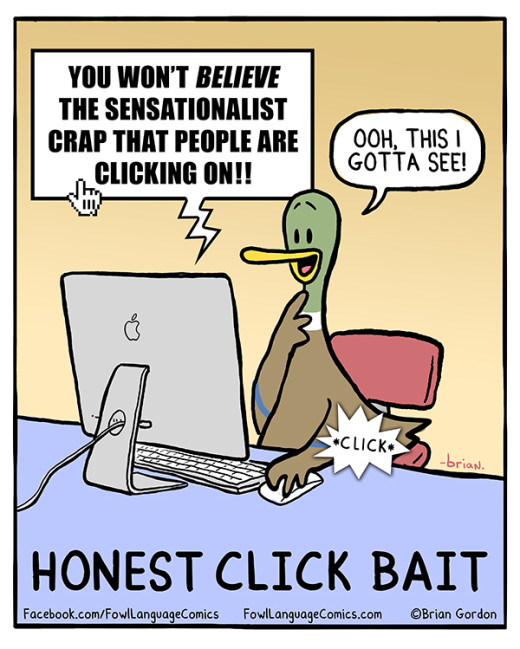
We’ve all seen it, and probably most of us have fallen for it – those headlines that scream that “You’ll never guess what (insert celebrity name) did” or “This will blow your mind”. In the online industry, these headlines are called clickbait, because they’re just that: a baiting headline designed to trigger an emotional response that urges you to click through to see what’s next.
Clickbait has been around in some form since the web became a dominant form of media. It makes sense from a logical business perspective – every day two million blog posts, 294 billion emails and over 800 thousand hours of video are created, something needs to be done for marketers to stand out from the herd.
Thus, clickbait strategy, which uses the age-old marketing philosophy of direct response:
Direct response marketing is a type of marketing designed to generate an immediate response from consumers.
By itself, clickbait and its tabloid-style headlines aren’t necessarily bad things. The problem is when we start seeing them everywhere.
If ten out of twenty headlines are telling you that your mind will be blown, the claim begins to lose credibility since it makes the claim of being extremely different, but uses the same language as all the others.
This problem becomes exacerbated when low-quality content starts using clickbait headlines everywhere. It’s even worse when legitimate, quality content gets sensationalized (or “pornified”) in order to attract clicks.
In general, these sites are more concerned with sheer traffic volume and ad impressions rather than delivering quality content, and the experience becomes diluted or worse, disruptive, for the user.
This is “fast food for the brain”: tabloid-style, attention-grabbing, arousal-inducing headlines and images that jump out at you, screaming for your attention – driven by sensationalism, shock, envy, insecurity, fear and all of the other really intense negative emotions that elicit a response.
But those responses don’t last. Every single time a user clicks and is disappointed, it trains their brain to stop paying attention. As humans, the more we are exposed to disappointing — and in some cases, frustrating or infuriating clickbait, the more skeptical we are of it, and the more we tune it out at the most basic biological level.

This goes beyond common sense; it’s actually ingrained into our wiring as human beings. When decision points come our way, our brains evaluate the possibilities based on all information available. This activity ignites neural activity in specific brain regions (e.g. the ventral striatum), and the resulting experience begins to shape our short-term and long-term approach to decisions.
The result creates a user response known as ad blindness. For the publishing industry to truly thrive, this is a practice that needs to be questioned, rather than standardized as the new normal.
That decision starts with industry leaders. Marketing trends tend to attract copycats quickly. Once something has been proven to work, others copy it ad nauseum, and over optimize against that formula until its power becomes gradually diluted or the approach becomes over saturated.
Simply put, a click is just a click. It is not a measure of successful engagement, and understanding why users are not clicking is important data about whether or not the content as it is being promoted actually works.
Clickbait loses its effectiveness because companies misinterpret the initial novelty behind the click as an effective method for attracting attention. Hence, the reason why the Internet is filled with so many low quality articles featuring clickbait headlines.
The body experiences a physiological response to disappointment: a seminal study by Schultz, Dayan and Montague documented the real-time response of rodent dopamine (the brain’s controller of reward and pleasure centers) neurons in three situations: getting a reward, getting an expected reward, and expecting a reward but not getting it. In the last situation, dopamine activity decreased; when combined with the aforementioned brain evaluation of decision points, and it’s clear why clickbait produces diminishing returns.
This same pattern has been exhibited repeatedly in humans in a variety of decision-making contexts.
Neuroimaging techniques like fMRI and PET have shown that these signals are measurable in people. (1, 2, 3, 4)

Human expectations, or ‘predictions’ of reward and the ‘prediction error signals’ coding the critical difference between expected rewards and what’s actually received, are reflected in the neural activity of regions critical for reward processing, such as the ventral striatum. In words, the brain starts expecting disappointment when the same source repeatedly fails to deliver upon its claims.
So while clickbait and other trendy online marketing methods may produce a momentary spike in traffic, those techniques will ultimately be rejected by users over the long run as these methods are increasingly associated with disappointing rewards. The flipside to this is that the dopamine response and decision analysis also demonstrates why high-quality content helps establish brands and brand loyalty over time.
In other words, quality matters. Quality of the experience and how it meets or exceeds a user’s expectations is the basis of engagement – not clicks.
Content providers must begin emphasizing the importance of relevant, engaging and appropriate content.
The technology we developed at FEM Inc. has been informed by these fundamental neuroscientific findings as well as insights from psychology.
The more we can understand user preferences through wide-ranging data sources, the easier it will be to provide relevant content that connects with people on an emotional level and serves their needs. Thus, the key to driving revenue is not simply throwing more content on a platform; instead, the goal is to increase the probability a viewer will stay and want to watch the next item on the playlist because it has fundamental value to the viewer.
The path to successful branding and engagement is clear: the foundation comes from quality content that the user actually wants rather than tricks to garner attention or trick them, and then continuously improving the user experience to naturally and authentically generate a positive response.
Perhaps most importantly, when a marketing trend saturates the web with low-quality content, brands must move away from that style of marketing before users develop a long-term negative physiological association – not just with that technique but with the brand itself.
In the end, quality generally wins over the long term – in nature and in marketing.
Read next: Facebook is targeting clickbait with Newsfeed algorithm update
Get the TNW newsletter
Get the most important tech news in your inbox each week.




